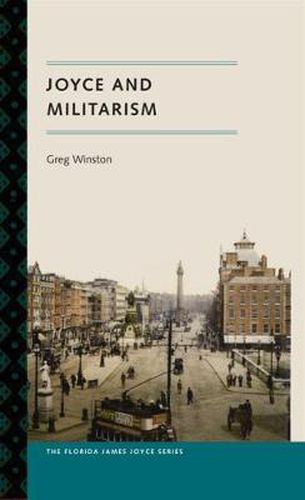Readings Newsletter
Become a Readings Member to make your shopping experience even easier.
Sign in or sign up for free!
You’re not far away from qualifying for FREE standard shipping within Australia
You’ve qualified for FREE standard shipping within Australia
The cart is loading…






Each of James Joyce’s major works appeared in a year defined by armed conflict in Ireland or continental Europe: Dubliners in 1914 at the outbreak of the First World War; A Portrait of the Artist as a Young Man in the same year as the 1916 Easter Rising; Ulysses in February 1922,two months after the Anglo-Irish Treaty and a few months before the outbreak of the Irish Civil War; and Finnegans Wake in 1939, as Joyce complained that the German army’s westward advances upstaged the novel’s release.
In Joyce and Militarism, Greg Winston considers these masterworks in light of the longstanding shadows that military culture and ideology cast over the society in which the writer lived and wrote. The first book-length study of its kind, this articulate volume offers original and interesting insights into Joyce’s response to the military presence in everything from education and athletics to prostitution and public space.
$9.00 standard shipping within Australia
FREE standard shipping within Australia for orders over $100.00
Express & International shipping calculated at checkout
Each of James Joyce’s major works appeared in a year defined by armed conflict in Ireland or continental Europe: Dubliners in 1914 at the outbreak of the First World War; A Portrait of the Artist as a Young Man in the same year as the 1916 Easter Rising; Ulysses in February 1922,two months after the Anglo-Irish Treaty and a few months before the outbreak of the Irish Civil War; and Finnegans Wake in 1939, as Joyce complained that the German army’s westward advances upstaged the novel’s release.
In Joyce and Militarism, Greg Winston considers these masterworks in light of the longstanding shadows that military culture and ideology cast over the society in which the writer lived and wrote. The first book-length study of its kind, this articulate volume offers original and interesting insights into Joyce’s response to the military presence in everything from education and athletics to prostitution and public space.